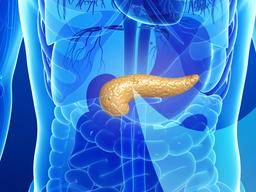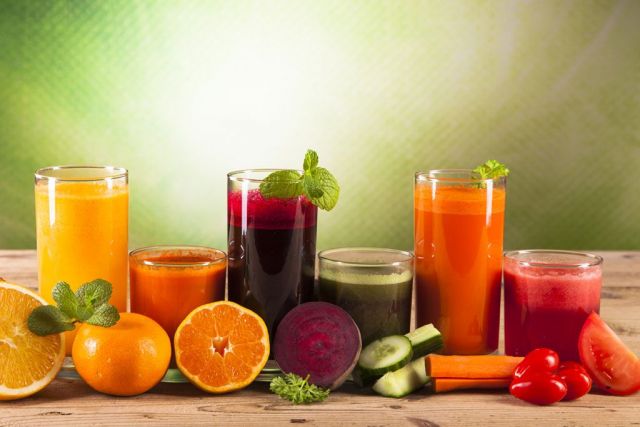The Ultimate Juice Fasting Guide: Understanding The Digestive System (Video and Recipes)
by N.Morgan

It is widely believed that juicing can reduce your risk of cancer, boost your immune system, remove toxins from your body, aid digestion and help you lose weight. However, there’s no scientific evidence that extracted juices are healthier than the juice you get by eating the fruit or vegetable itself.
Have you ever done a juice fast? If not, you may want to consider it. We’ve learned that “fasting for three days can regenerate your entire immune system because it triggers the body to start producing new white blood cells.” Dr. Longo explains further: “When you starve, the system tries to save energy, and one of the things it can do to save energy is to recycle a lot of the immune cells that are not needed, especially those that may be damaged.”
From this 4-part series, you will learn to understand the digestive process and some of the most important benefits of juice fasting. I will share with you what vegetables and fruits are the most beneficial, as well as some of the tips and tricks that help me to stick to the regimen without giving in to the temptations that come along your juice fast. Let’s dive right in:
First of all, you ask, why would I want to deprive myself of food for three days or more?
That’s a good question!
Yet technically, you’re not depriving yourself of food. You ARE having food, just in liquid form, which is a welcomed break for your body. The digestive process is really exhaustive.
I have prepared a quick summary of all the parts involved in digesting the food you consume. It will help you visualize the process and understand why juice fasting is necessary for optimal health and since most of us don’t actually do anything unless we truly believe in its benefits, I believe this is an imperative step to committing to a juice fast.
STEP 1: YOUR MOUTH

When we hear digestion, we think the magic happens in our stomach for the most part. So you may be surprised that the mouth plays an important role in commencing the digestive process. Your teeth chop food into small pieces that become moistened by saliva — this is produced by an accessory organ called salivary glands. Pretty straight forward. Saliva doesn’t just moisten the food, though, it also begins the digestion of carbohydrates. The tongue helps to push food toward the posterior part of the mouth in preparation for swallowing.
STEP 2: YOUR THROAT

Now you’ve likely swallowed food accidentally that wasn’t chewed properly, and you know it hurts so badly! That’s because your throat is a tight funnel-shaped tube that has two functions: 1) send your chewed food on its way to the gastrointestinal (GI) tract, and 2) channel air from the nasal cavity to the lungs. Because your throat is duo-functional, you can think of it as a railway station that uses a flap of tissue to switch tracks depending on if the train coming through is the air that must be sent to the lungs, or if it’s food and needs to go to the esophagus.
STEP 3: YOUR ESOPHAGUS

Esophagus what? Now don’t get bogged down by technical terms that sound like Latin gibberish. The esophagus is a muscular tube that connects your throat to your stomach.
Food is forced into the stomach by powerful waves of muscle contractions passing through the walls of the esophagus. So you can imagine it as a water slide! Kind of looks like one too…Now at the end of the esophagus is a muscular ring, also known as the cardiac sphincter. The purpose of this sphincter is to close off the end of the esophagus and trap food in the stomach. It sounds scary, but it’s actually quite useful in preventing food from coming back up, which is super uncomfortable and just downright gross.
STEP 4: YOUR STOMACH

Your stomach is a major organ that acts as a storage tank for food so that your body has enough time to digest large meals properly. The stomach also contains hydrochloric acid (the stuff that makes your vomit burn your throat) and digestive enzymes which continue the digestion of food. The cool little fact to nerd out over the average person’s stomach is about the size of their two fists placed next to each other. Go ahead…I know you want to press your two fists together…Alright now that we have that covered, let’s talk about your small intestine.
STEP 5.1: YOUR SMALL INTESTINE

The small intestine is attached to your stomach. It’s a long, thin tube about 1 inch in diameter and about 10 feet long, that’s about 3 meters. Crazy right? That’s your small intestine and it plays a major role in the digestion of your food and even more so, the absorption of nutrients. By the time food leaves the small intestine, around 90% of all nutrients have been extracted from the food. This thing is a sponge machine!
STEP 5.2: YOUR LIVER & GALLBLADDER

Simultaneously, the second largest organ in your body, your liver, has many different functions in the body. When it comes to digestion, its main purpose is to produce bile and secrete it into the small intestine. Bile is incredibly important here because it an essential “de-greaser” and “emulsifier” of dietary fats, but it’s just as imperative for the utilization of the fat-soluble vitamins A, D, E, and K.
Now while the liver produces bile, your gallbladder stores and recycles excess bile from the small intestine so that it can be reused for the digestion of subsequent meals. A lot of problems arise when the liver and gallbladder are not working properly, which I will discuss in a later post (and of course, how you can repair your liver — HINT: you’re on the right track; juicing is a great start!)
STEP 5.3: THE PANCREAS

The pancreas is unique in that it is both an organ and an endocrine gland. For the digestive process, it is integral to producing pancreatic enzymes which are essential to break down fats, proteins, and carbohydrates properly. You may have heard of these enzymes: lipase for fats, protease for protein and amylase for carbohydrates. Sufficient production of enzymes is an energy-expensive process, which is just another reason to eat more raw vegetables because they contain natural enzymes so they partially break down themselves. So the more you have, the less work for your digestive system!
STEP 6: THE LARGE INTESTINE

At last, we have the large intestine which is also commonly referred to as the colon. Now that the food has been broken down, the large intestine “cleans up the beautiful mess” so to speak. Healthy bacterial flora is responsible to absorb vitamins and decompose waste. Unused waste, or feces, is then compacted and stored in the rectum, where it will remain until you go to the bathroom to take care of business.
That concludes the digestive process. Amazing how every time you consume any type of food, it goes through this extensive process. Having said that, how well this process works is solely dependent on how well you treat your body. And when it doesn’t work optimally, you are at risk of both physical and mental ill-health. So take care of your digestive system! Which is a perfect segue…to introduce the benefits of juice fasting.

Take a break. So let’s say you consume an average of 3 meals a day. That’s 1095 meals per year!
Now let’s assume that you are privileged to eat 3 meals a day throughout your entire lifetime. The average life expectancy in Canada based on 2009 statistics is 81 years. That’s 88,695 times your body goes through the digestive process explained above.
You don’t expect any other part of your body to work that hard every single day, do you? How about working out your legs 88,695 times with no break? It seems absurd when you do the math and that’s exactly the reason why I laid out the numbers for you. Everyone and everything needs rest, including your digestive system. The few hours in between meals don’t count — it’s simply not enough time to actually get high-quality rest.
We have an affiliate program designed for content creators and affiliate marketers, who would like to sell this product, please click here for affiliate program details. Our affiliate program is designed to help you monetize your screen time.

References:
.png)

Comments
Post a Comment